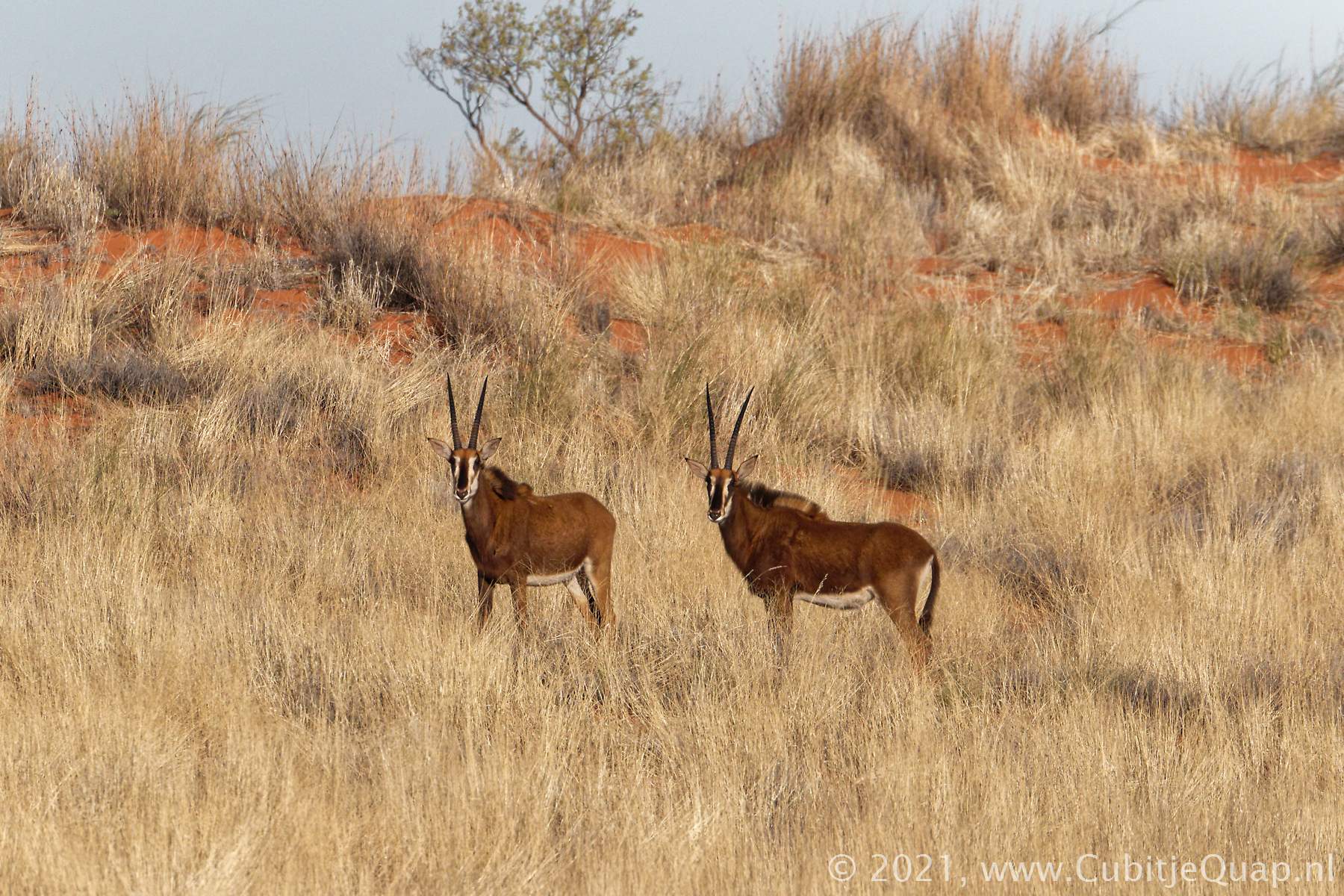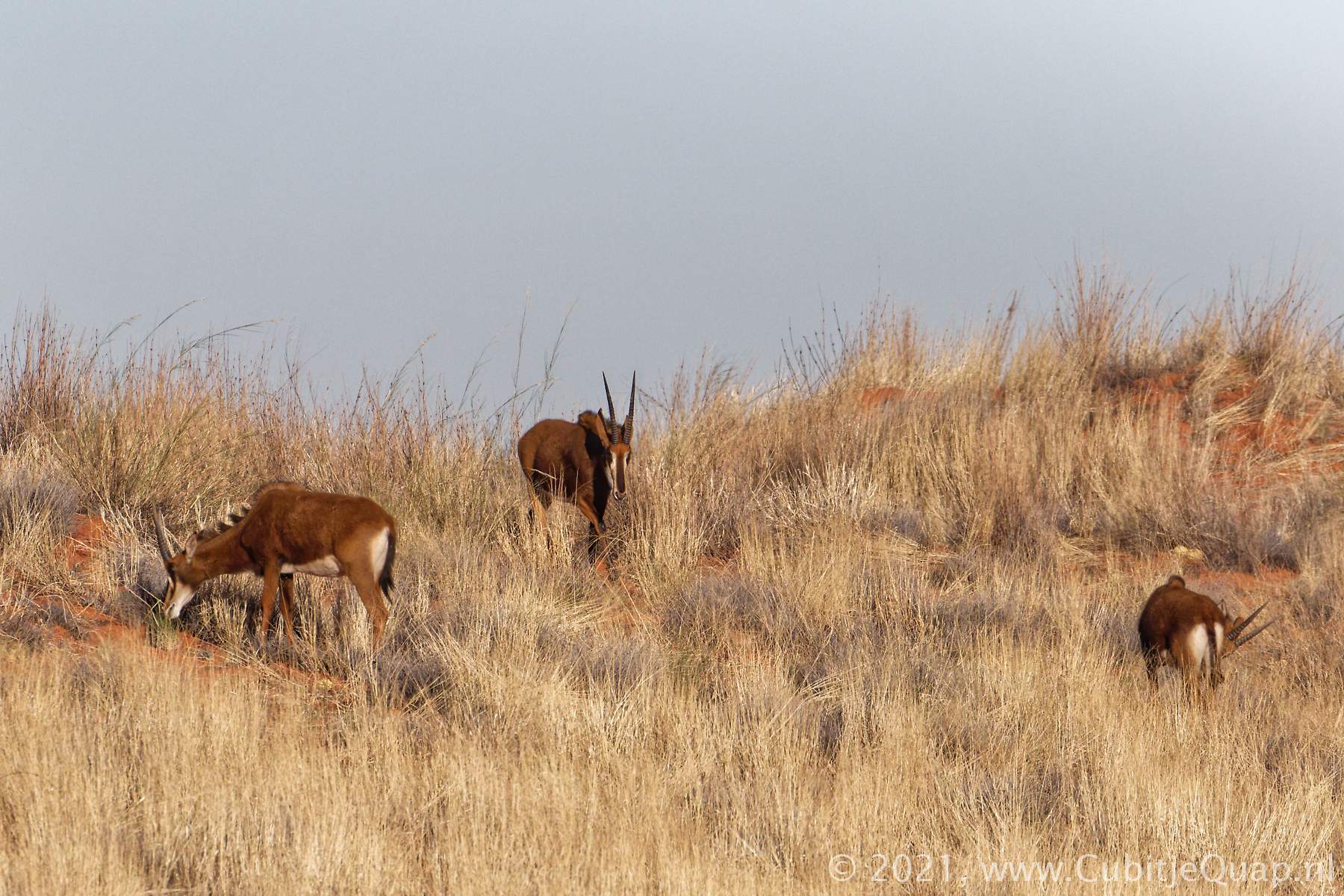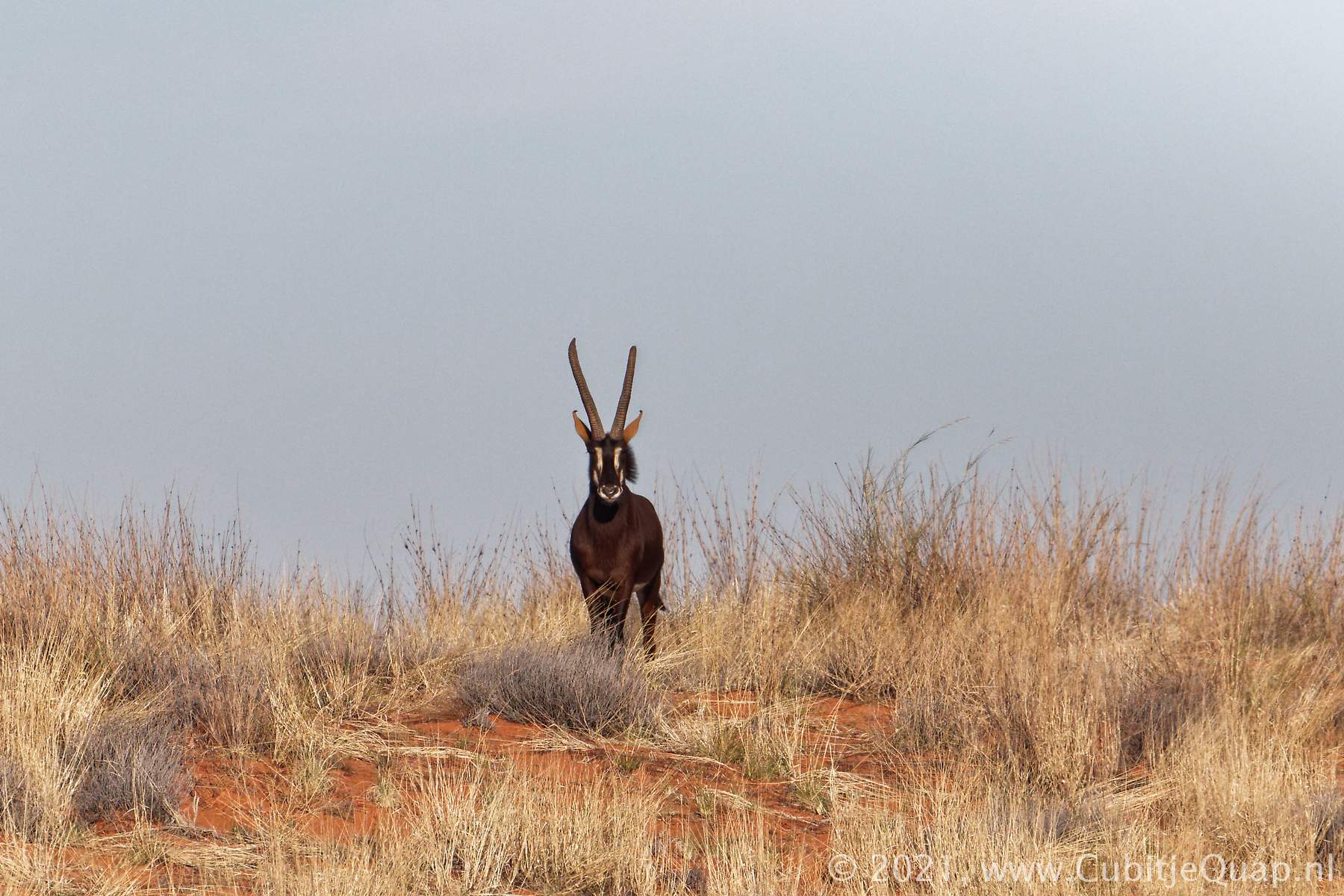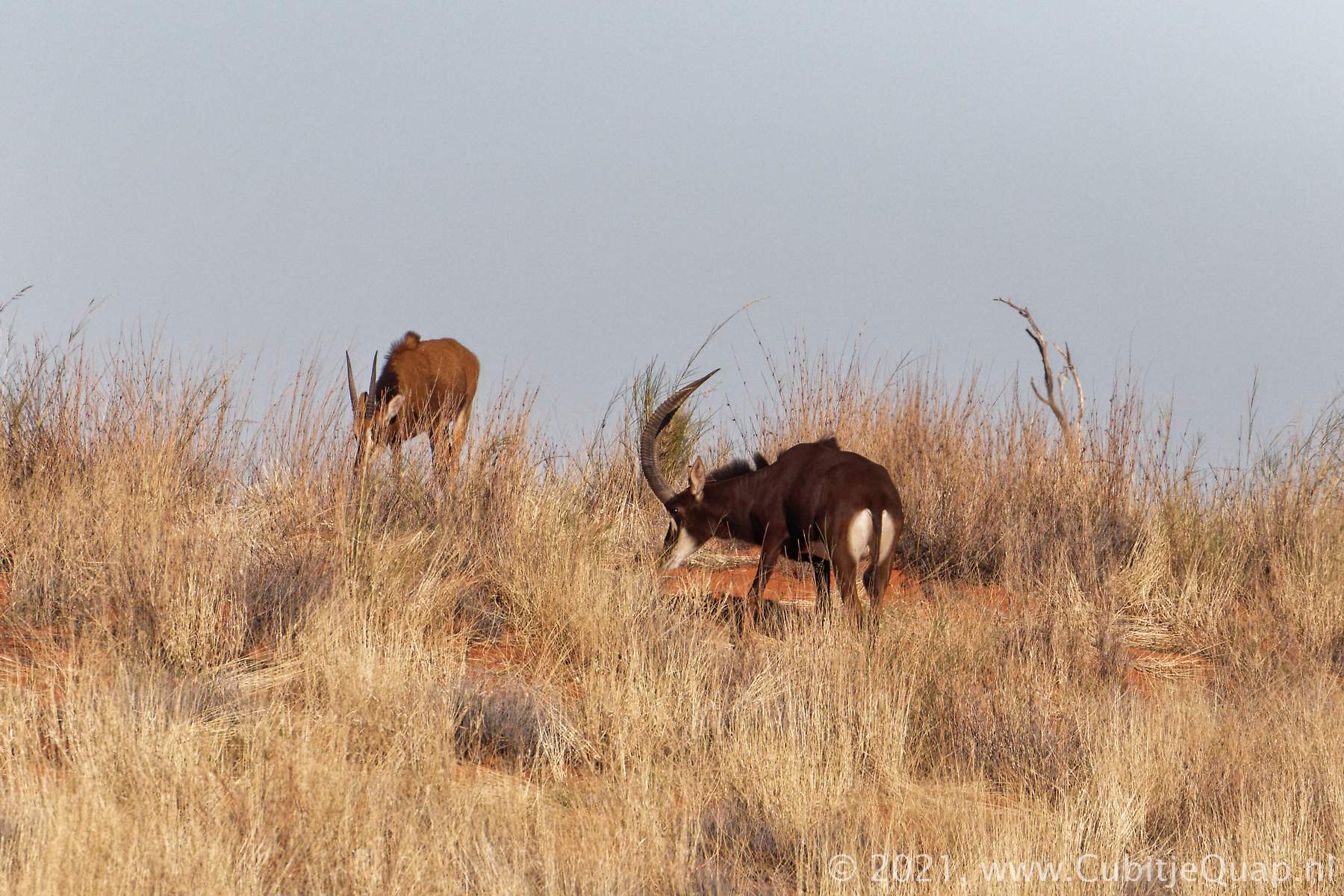Sable antelope
Appearance
Shoulder height 135 cm; tail 50 cm; mass 280 - 270 kg (average 230 kg)Bull: average horn length 102 cm
The adult bull is shiny black with sharply contrasting white underparts and inner thighs. Cows and younger bulls are usually reddish brown above. The black and white facial markings are conspicuous. The face in mainly white with a broad black blaze from the forehead to the nose and a black stripe from below the eye almost to the muzzle. There is an erect, fairly long mane runing from the top of the neck to just beyond the shoulders. The ears are long and narrow but lack the tufted tips found in roan antilope. Both sexes carry horns but those of the bull are longer and more robust. The transversely ridged hornes rise up from the skull and then sweep backwards in a pronounced curve.
Habitat
Sable are usually associated with dry, open woodland with medium to tall grass. They avoid dense woodland and short grassveld. Water is essential.Behaviour
The Sable antilope live in herds usually numbering from 10 to 30 individuals but sometimes larger groups come together. Territorial bulls establish themselves in territories overlapping those of nursery herds (cows and young animals). The nursery herds move within a fixed home range. During the rut the bull tries to keep the cows within his territory. As with roan antilope, a cow takes over leadership of a nursery herd. The young bulls grow up within bachelor herds, only seeking out their own territories in their fifth or sixth year. Most sable antelope activity takes place in the early morning and late afternoon.Food
Sable antelope are principally grazers but will take browse, particularly in the dry season.Interesting links
WikipediaNomenclature
(en) Sable antelope(sc) Hippotragus niger
(nl) Sabelantilope
(af) Swartwitpens




